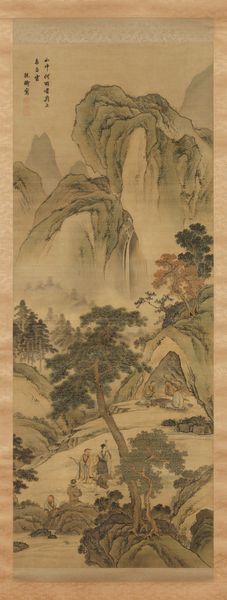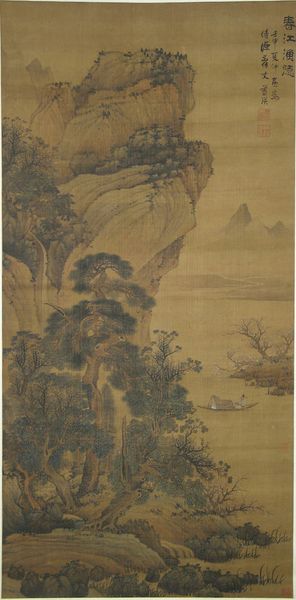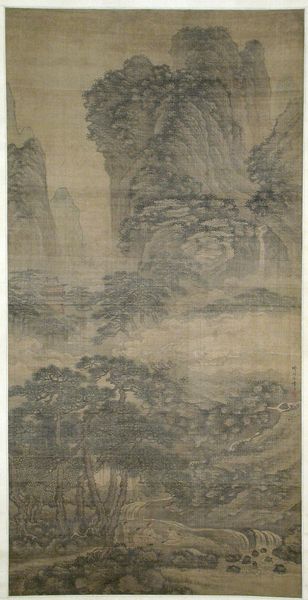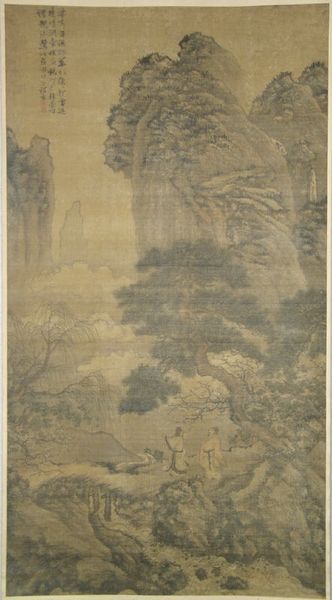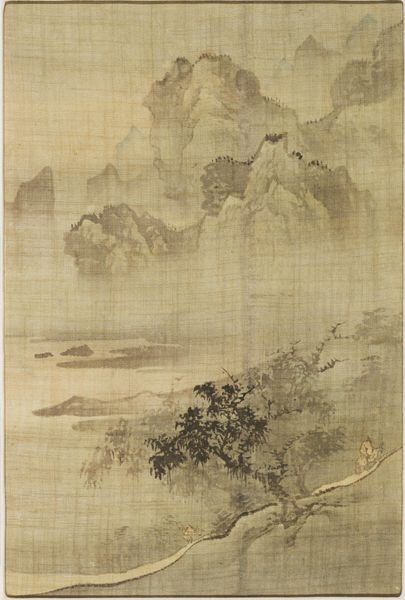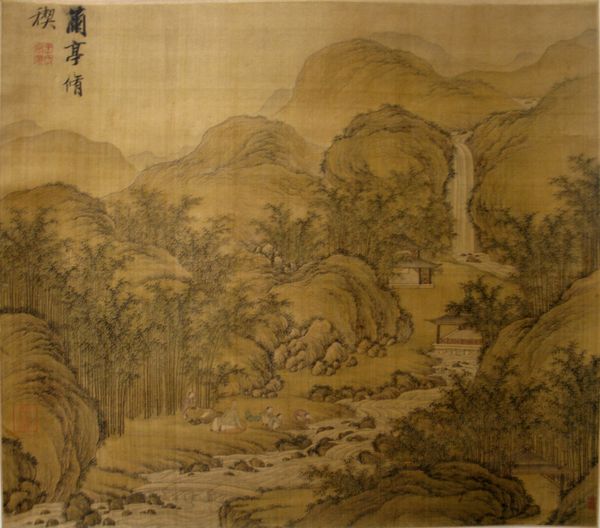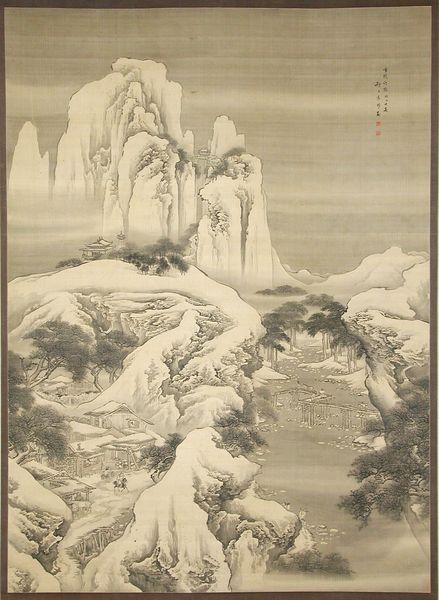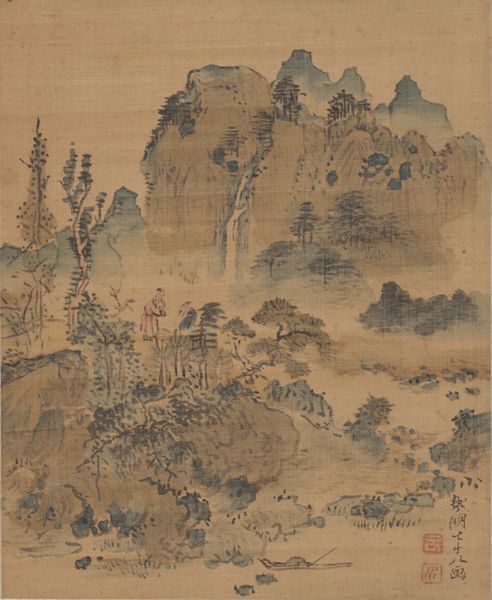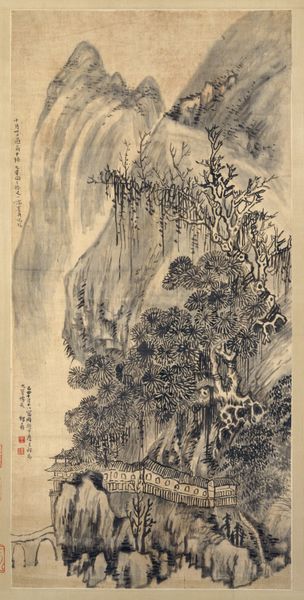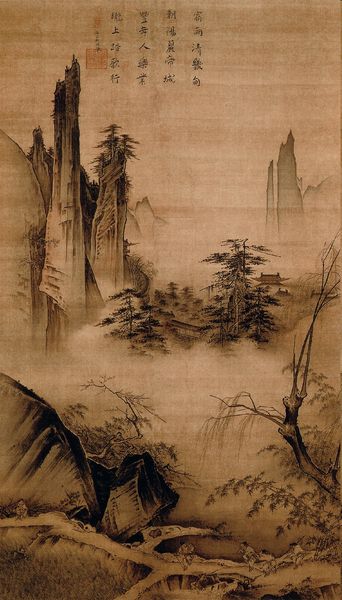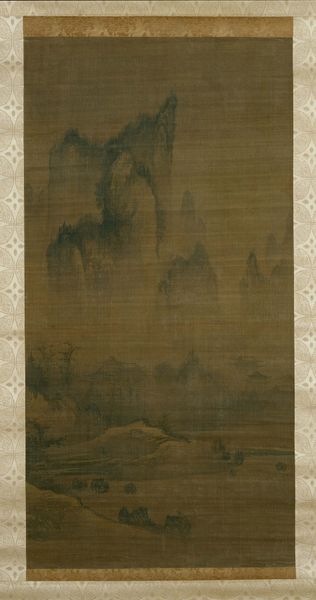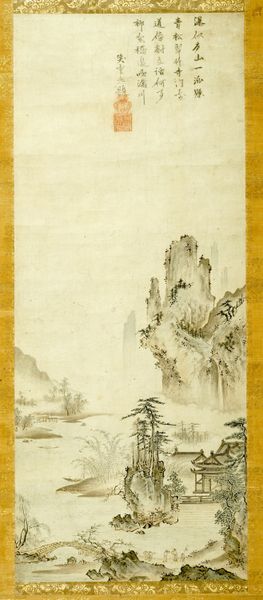
painting, ink
#
ink painting
#
painting
#
asian-art
#
landscape
#
form
#
ink
#
geometric
Dimensions: Image: 87 3/4 × 44 3/4 in. (222.9 × 113.7 cm) Overall with mounting: 10 ft. 3 1/2 in. × 47 3/4 in. (313.7 × 121.3 cm) Overall with knobs: 10 ft. 3 1/2 in. × 52 in. (313.7 × 132.1 cm)
Copyright: Public Domain
Curator: This ink painting, entitled "Viewing a Waterfall from a Mountain Pavilion," was created around 1700 by the artist Li Yin, and now it resides here at the Metropolitan Museum. Editor: It evokes such a profound sense of tranquility. The way the mists soften the rugged landscape makes you feel almost suspended in time. Is that the intention, or just the product of the ink wash technique? Curator: Li Yin’s compositions really invite contemplation. The geometric forms found within the rocky crags create a fascinating dance between the structural and the ephemeral. I wonder about those figures within the pavilion; their gaze guides my own toward the cascade, but what do they *see* that I can't? Editor: Those viewing the waterfall in the pavilion – the leisure class – their positioning and placement underscore themes of privileged perspectives. In whose leisure were these mountain landscapes made to reflect? How does the artistic depiction of natural wonders mirror or contrast the political power dynamics of that time? Curator: Absolutely. I’ve always been struck by how this work feels simultaneously expansive and intimate, you know? Like I'm being invited to join that collective moment, to share the serenity, but at the same time I am held at a distance, in some state of otherness to them, as a singular "I". The painting does create a very thoughtful interplay of near and far. Editor: And think about the waterfall itself, representing nature's power. The controlled depiction of that force contrasts against its boundless potential, maybe reflecting cultural efforts to organize or temper the unruliness inherent within systems of authority. There are complex threads there, I think, about art and its capacity to echo society’s layered controls. Curator: Indeed. Gazing upon such works prompts reflection on our existence within these elaborate social architectures, questioning not just who observes the landscape, but *why.* Editor: Thinking about it all, this is another case for art as a mirror. It can be a powerful instrument to view not only physical but cultural topography. Thanks, Li Yin, for that! Curator: It surely does! A deep bow for Li Yin from me too!
Comments
No comments
Be the first to comment and join the conversation on the ultimate creative platform.
